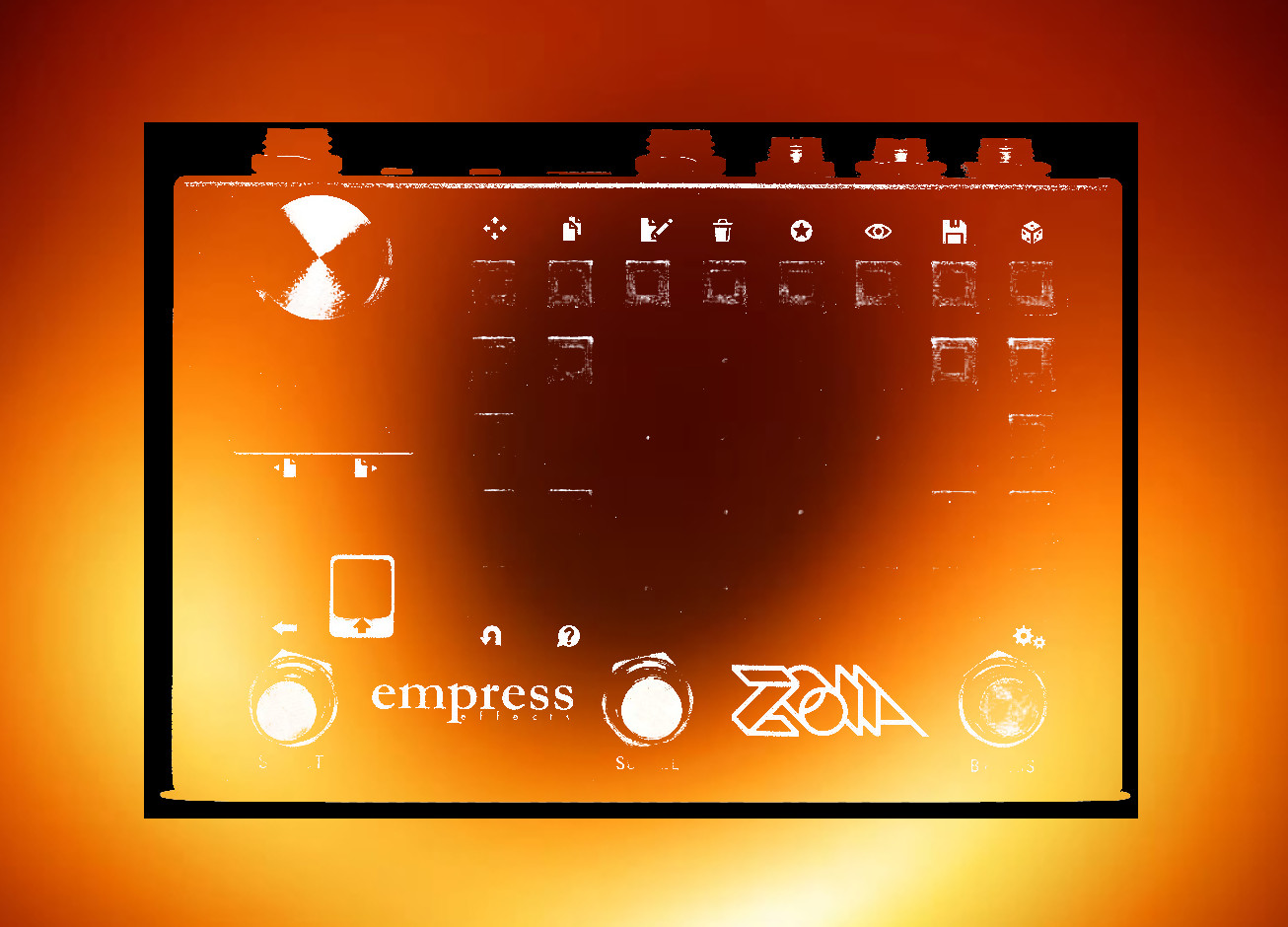Another in my series of “Zoia as sampler.” Let me be clear: the Zoia is no MPC. In reality, most of this seems to push the Zoia, and particularly its looper, beyond its intended purposes, and the proof is in the pudding. Still, _some_ of this works really well, and there’s enough potential in other aspects for me to keep working on it.
As this is a work-in-progress, feedback/suggestions/ideas are certainly welcome!
A quick overview: the MPC had a feature called 16 Levels, which allowed you to spread parameter control across its 4×4 grid. Originally a velocity control, it was subsequently expanded to include pitch, filter, decay, and attack. Additionally, with an MPC, you could take a sample and chop it sequentially, so that each pad played a portion of the slice.
This version ditches the attack/decay parameters (they have their purposes, but…) and attempts two approaches to pitchshifting, velocity, filter, and chopping.
Not all of these features work as well as others. Chopping, which is, to me, the most exciting prospect is… glitchy and unpredictable (not in cool ways), and getting it to be _this functional_ took several hours and nearly broke me. I’m going to keep working on it, though, because sample flipping is loads of fun.
The others… velocity works fine. Filter works fine. I think the time-stretch version of the pitchshift sounds great. The pitchshifter module version… well, it’s not a great use for the pitchshifter.
Plans for the future:
–Continue refining the chop feature. There are some latency issues which may keep it from being in the same ballpark as the MPC, but I do believe I can get it to function better. I just need… distance before I try again.
–Probably ditch the pitchshifter. It takes up a lot of CPU and doesn’t add much. Maybe replace it with a decay parameter and a high-pass filter. Or an effects send. Something more useful.
–This is a very “raw” version. It’s not well-organized, and there are some user-friendly features (indicator pixels for each mode) that got tossed for CPU. Some of the parameters might work better if they functioned like the pitchshifters do, holding pitches through the loops play. General refinements to functionality.
Front page:
[ ] [ ] [ ] [ ] [ ] [ ] [ ] [ ]
[ ] [ ] [X] [X] [X] [X] [ ] [ ]
[ ] [ ] [X] [X] [X] [X] [ ] [ ]
[ ] [ ] [X] [X] [X] [X] [ ] [ ]
[*] [ ] [X] [X] [X] [X] [W] [G]
X = 4×4 grid
* = Setting indicator light (no light is setting 1, brightest is setting 5–I wanted to do a pixel strip, but CPU….)
W = White Value Module, controls starting pitch of pitchshift functions, up or down two octaves++
G = Controls resonance of filter (this control is active even when not in filter mode. I wanted to do a bypass, but CPU….)++
++Be careful not to connect these to the pushbuttons.
Footswitches:
Left, momentary: Record sample.
Middle, latching: Toggle through settings. 1 = velocity (volume), 2 = chop/slice, 3 = loop speed pitchshift/time stretch, 4 = low-pass filter, 5 = pitchshifter
Right, latching: toggle between one-shot and loop
Sound clip:
From the late Charles Bradley’s stunning rendition of Black Sabbath’s “Changes” (please don’t sue)
0:00-0:40: Velocity mode, first with one-shot mode (although I overlap my triggers a couple times, which you can do to connect settings in one-shot mode in some circumstances), then loop mode
0:41-1:30: Chop mode, again, first with one-shots, then loops. Note the clicks in one-shot mode. Note how the sample has to “catch up” to the chopped region in loop mode. I plan to look into this further, but I have tried quite a few things, and I may simply be asking the looper to do things it wasn’t designed for.
1:31-2:41: Loop speed. Again, first one-shots, then loop. Note how the loop mode switches back and forth between the shifted speed and the default as I release the pushbutton. In one-shot mode, on the other hand, it will hold the pitch until it receives a new trigger.
2:42-3:40: Low-pass filter. About halfway through, I had a little resonance to the filter.
3:40-4:41: Pitchshifter. Not really the best use of the pitchshifter in my opinion. It is nice to be able to affect the pitch without changing the speed, but…. It does sound better with something like a sampled waveform, but… not a lot?



Also on the to-do list:
Some MIDI features would probably make sense. All of which is to say, if you really like the pitchshifter module’s addition to this patch, act fast, I think.
I plan on returning to this patch this weekend. If I can iron out the “slice” mode (or at least make it more usable), the plan is to cut the pitchshifter, add a note repeat, do some basic MIDI, and add a looper with overdub, so you can build a track, and add some more user feedback about what condition the patch is in (loop or one-shot/velocity, slice, pitch, or filter).